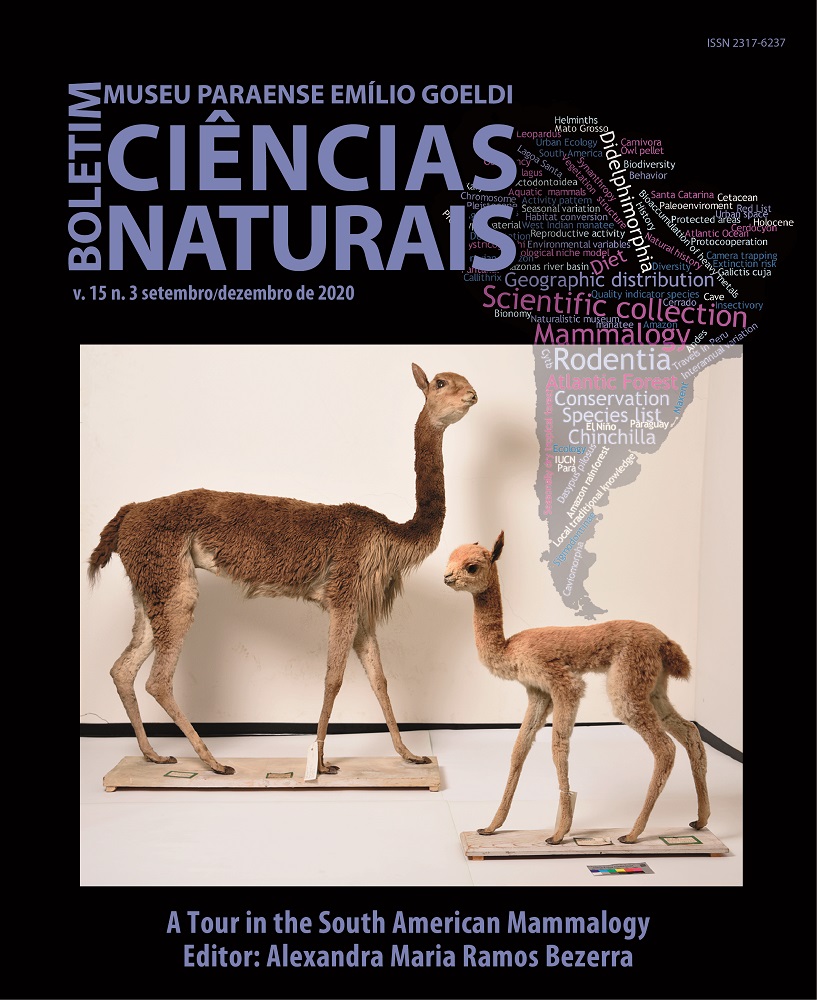Genetic diversity and chromosome complement of Galictis cuja (Molina, 1782) (Carnivora: Mustelidae) with comments about its role as parasite hosts
DOI:
https://doi.org/10.46357/bcnaturais.v15i3.199Keywords:
Lesser grison, Cytochrome b, Karyotype, Geographic distribution, HelminthsAbstract
The distribution of Galictis cuja encompasses several countries of South America, including Brazil, where it inhabits the Atlantic Forest, part of Caatinga and part of Cerrado biomes. Herein we analyzed G. cuja specimens from localities in the Brazilian states of Rio de Janeiro, Minas Gerais, and Bahia, and the Distrito Federal, mainly roadkilled animals. The genetic diversity was estimated based on DNA sequence data of the mitochondrial gene cytochrome b (mt-cyb). Analysis of mt-cyb identified high haplotypic diversity, albeit with low nucleotide diversity, suggesting that this population is in expansion and confirming the presence of gene flow. The karyotypes of two Galictis cuja specimens were described as 2n = 38 and FNa = 66. Our data showed that G. cuja is frequent in the investigated areas of Atlantic Forest biome, being a common roadkill mammal. Our data suggest that G. cuja may play a role as a spreader of zoonotic parasites.
Downloads
Published
Issue
Section
License
Publication means fully assigning and transferring all copyrights of the manuscript to the journal. The Liability Statement and
Assignment of Copyrights will be enclosed with the notice of acceptance. All the authors must sign the document and return it to the journal.








